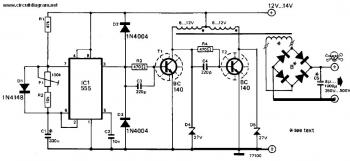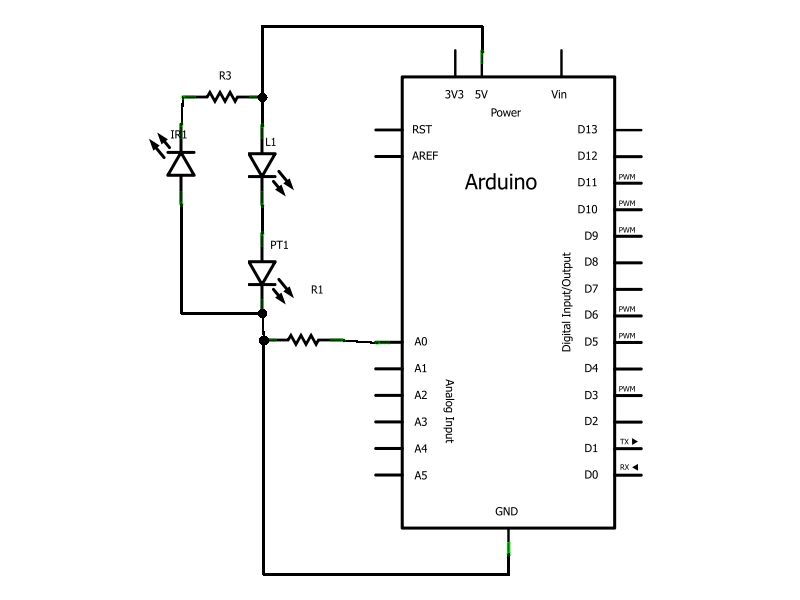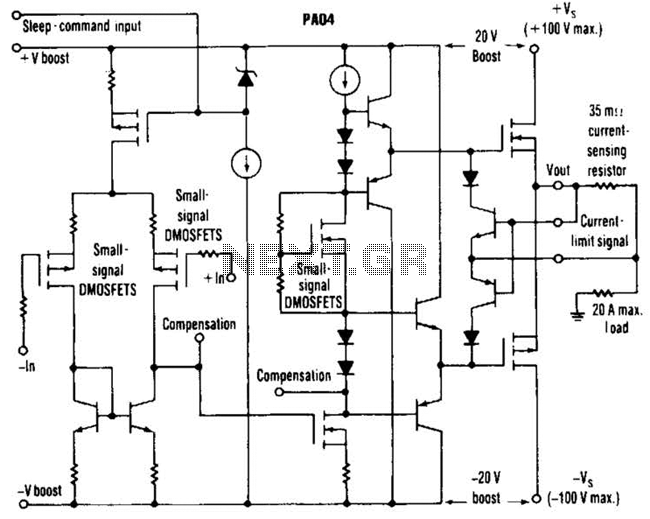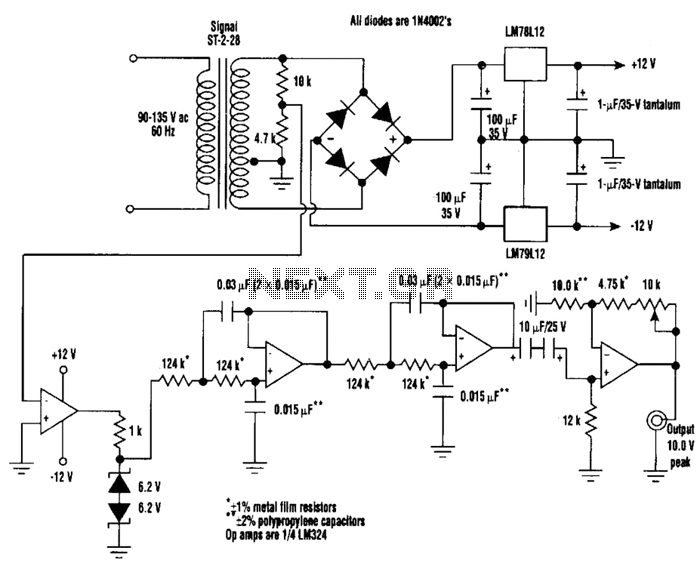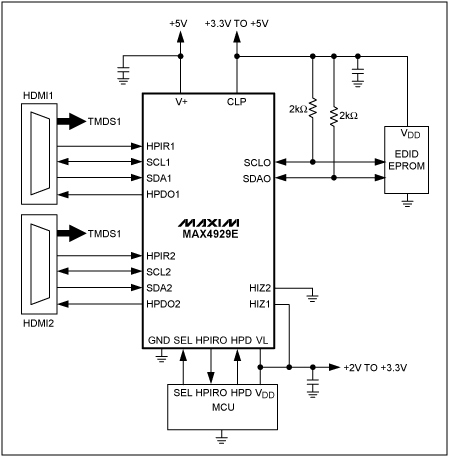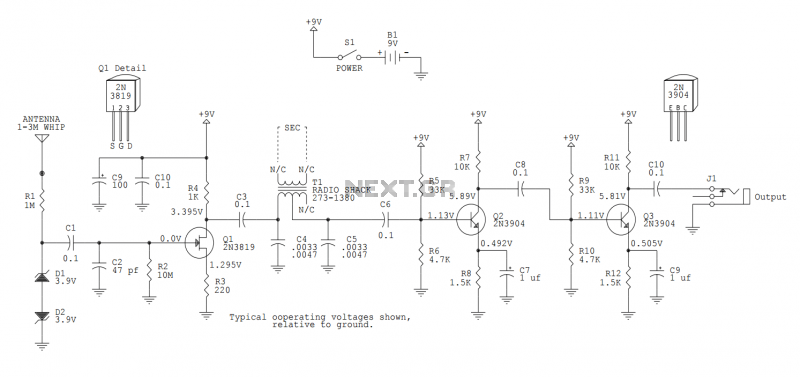
Supercapacitor charger electronic circuit using LTC3625
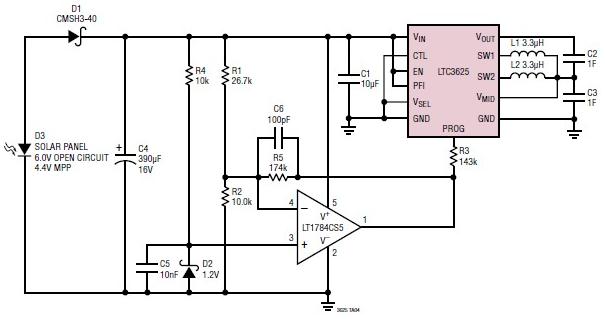
A simple supercapacitor charger electronic project can be designed using the LTC3625 integrated circuit (IC) from Linear Technology. This circuit is capable of charging two supercapacitors in series to a fixed output voltage of either 4.8V/5.3V or 4V/4.5V, which can be selected based on the application. The input supply range for this project is from 2.7V to 5.5V. The LTC3625 features automatic cell balancing, which prevents overvoltage damage to either supercapacitor while maximizing the charge rate without the need for balancing resistors. The circuit diagram demonstrates high efficiency, high charging current, low quiescent current, and requires minimal external components. The charging current and maximum input current level can be programmed using an external resistor. When the input supply is disconnected or the EN pin is set low, the LTC3625 automatically enters a low current state, drawing less than 1 µA. This circuit is straightforward, requiring only a few external electronic components in addition to the LTC3625 IC and a solar panel, including an LT1784 operational amplifier and some common external parts.
The LTC3625 is a high-performance buck-boost converter designed specifically for supercapacitor charging applications. Its ability to operate over a wide input voltage range makes it suitable for various power sources, including batteries and solar panels. The device's efficiency is critical, as it ensures that most of the input power is converted into usable output energy, minimizing losses during the charging process. The fixed output voltage selection allows for flexibility in applications, enabling the user to adapt the circuit to different supercapacitor configurations.
The automatic cell balancing feature of the LTC3625 is particularly advantageous, as it ensures that both supercapacitors charge equally, thus extending their lifespan and maintaining performance. This is achieved without the need for external balancing resistors, which can introduce additional complexity and power loss. Instead, the LTC3625 internally manages the balancing process, allowing for a more compact and efficient design.
The choice of an LT1784 operational amplifier in this circuit further enhances performance. The LT1784 is known for its low offset voltage and low noise characteristics, making it ideal for precision applications where accurate voltage levels are crucial. This op-amp can be used in feedback loops or signal conditioning stages within the circuit, contributing to the overall stability and reliability of the supercapacitor charging process.
Overall, this supercapacitor charger circuit is a robust solution for energy storage applications, combining high efficiency, ease of use, and minimal component requirements. The design is particularly suited for renewable energy applications, such as solar energy systems, where effective energy storage is essential for continuous power supply. The simplicity of the circuit allows for easy integration into various projects, making it an excellent choice for both hobbyists and professionals in the field of electronics.A very simple supercapacitor charger electronic project can be designed using the LTC3625 IC designed by Linear technology to charge two supercapacitors in series to a fixed output voltage (4. 8V/5. 3V or 4V/4. 5V selectable) from a 2. 7V to 5. 5V input supply. Automatic cell balancing prevents overvoltage damage to either supercapacitor while maximizi ng charge rate without using any balancing resistors. This electronic circuit project presented in this circuit diagram has high efficiency, high charging current, low quiescent current and require low minimum external parts Charging current/maximum input current level is programmed with an external resistor. When the input supply is removed and/or the EN pin is low, the LTC3625 automatically enter a low current state, drawing less than 1 A.
The circuit is very simple requiring few external electronic parts, excepting the LTC3625 IC and solar panel this circuit project require a LT1784 op amp and some common external parts. 🔗 External reference
The LTC3625 is a high-performance buck-boost converter designed specifically for supercapacitor charging applications. Its ability to operate over a wide input voltage range makes it suitable for various power sources, including batteries and solar panels. The device's efficiency is critical, as it ensures that most of the input power is converted into usable output energy, minimizing losses during the charging process. The fixed output voltage selection allows for flexibility in applications, enabling the user to adapt the circuit to different supercapacitor configurations.
The automatic cell balancing feature of the LTC3625 is particularly advantageous, as it ensures that both supercapacitors charge equally, thus extending their lifespan and maintaining performance. This is achieved without the need for external balancing resistors, which can introduce additional complexity and power loss. Instead, the LTC3625 internally manages the balancing process, allowing for a more compact and efficient design.
The choice of an LT1784 operational amplifier in this circuit further enhances performance. The LT1784 is known for its low offset voltage and low noise characteristics, making it ideal for precision applications where accurate voltage levels are crucial. This op-amp can be used in feedback loops or signal conditioning stages within the circuit, contributing to the overall stability and reliability of the supercapacitor charging process.
Overall, this supercapacitor charger circuit is a robust solution for energy storage applications, combining high efficiency, ease of use, and minimal component requirements. The design is particularly suited for renewable energy applications, such as solar energy systems, where effective energy storage is essential for continuous power supply. The simplicity of the circuit allows for easy integration into various projects, making it an excellent choice for both hobbyists and professionals in the field of electronics.A very simple supercapacitor charger electronic project can be designed using the LTC3625 IC designed by Linear technology to charge two supercapacitors in series to a fixed output voltage (4. 8V/5. 3V or 4V/4. 5V selectable) from a 2. 7V to 5. 5V input supply. Automatic cell balancing prevents overvoltage damage to either supercapacitor while maximizi ng charge rate without using any balancing resistors. This electronic circuit project presented in this circuit diagram has high efficiency, high charging current, low quiescent current and require low minimum external parts Charging current/maximum input current level is programmed with an external resistor. When the input supply is removed and/or the EN pin is low, the LTC3625 automatically enter a low current state, drawing less than 1 A.
The circuit is very simple requiring few external electronic parts, excepting the LTC3625 IC and solar panel this circuit project require a LT1784 op amp and some common external parts. 🔗 External reference
